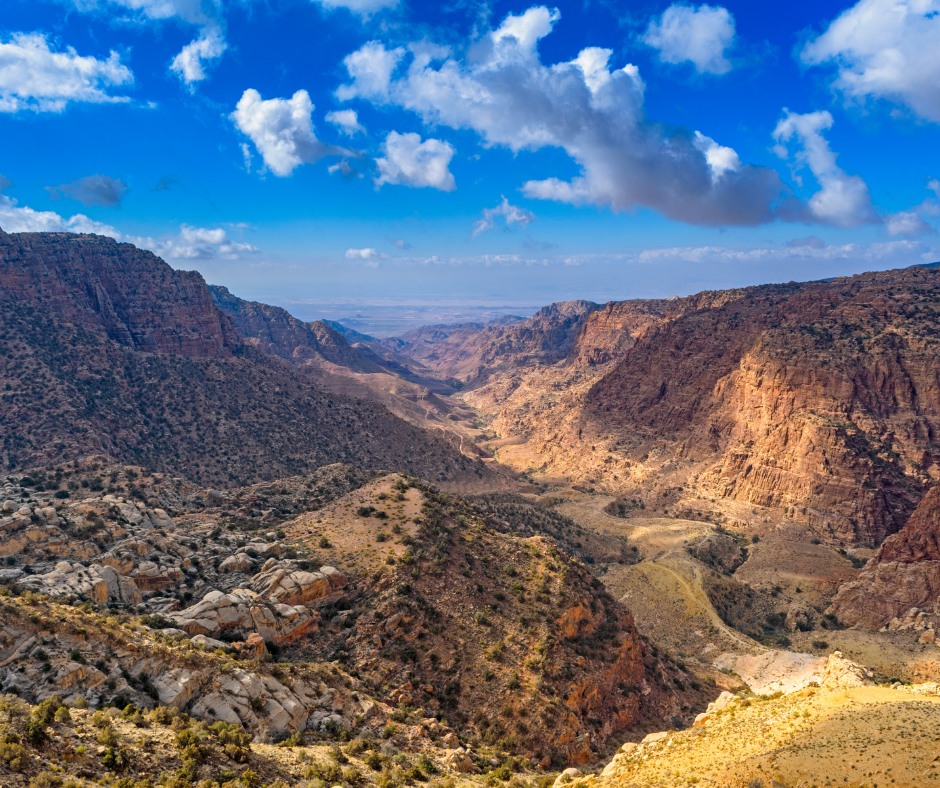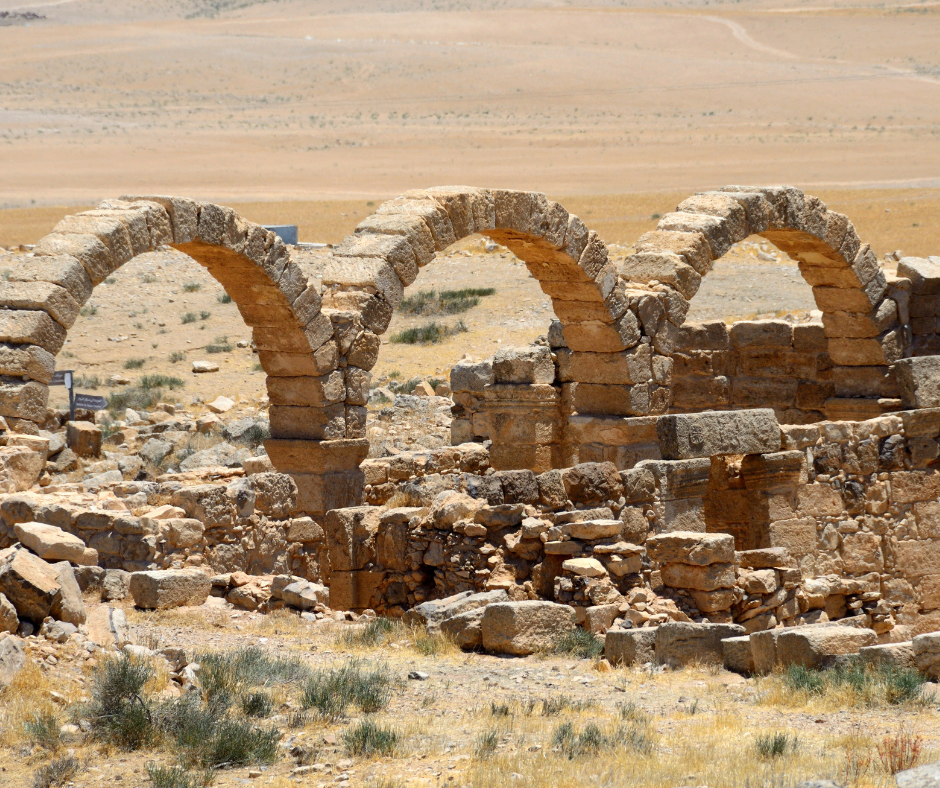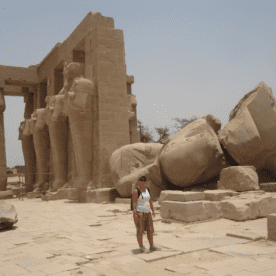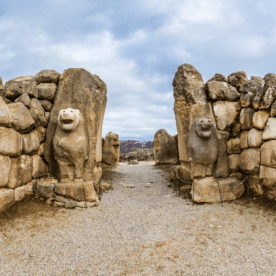Looking to explore Jordan beyond Petra, Jerash and the Wadi Rum? Get off the beaten path because Jordan has so much more to offer the traveller than just the most popular of its attractions.
Desert Castles
A great way to get off the beaten path in Jordan is to visit some of Jordan’s enigmatic desert castles or Umayyad castles which can be found in mostly in the north of the country. The castles, today called ‘qasrs’ in Arabic, were erected along important trading routes roughly between 660 and 750 under the Umayyad Caliphate. These castles were often used as retreats or hunting lodges by the elite and some still contain beautiful frescoes and reliefs which can be seen today. The castles usually consist of the main palace or living area, hammam or bath house, mosque and other structures all built within a large enclosure presumably built to protect the residents. The palace was usually a two-story structure built around a central courtyard, not too different from the construction of a Moroccan Riad and built near a watercourse or ‘wadi’.
The most intact and spectacular example of Jordan’s desert palaces is Qasr Amra located on the desert road in Jordan’s northeast. Qasr Amra is also known as the ‘little castle’ and is of a later construction. It is estimated that it was built between 723 and 743. Despite its small size today, Qasr Amra is only a fraction of what remains of a large royal retreat. Qasr Amra is a single building of a larger complex and was probably a cabin or guesthouse. Other desert castles worth a visit are Qasr al-Azraq and Qasr-al Hallabat, if you’re limited on time, you could check out Qasr-al Mshatta which is relatively close to Amman airport.


Dana Biosphere Reserve
Jordan isn’t all about lost cities, desert and nomads, it actually has some great national parks and offers some wonderful wildlife watching. One of those places is Dana Biosphere reserve, which is Jordan’s largest natural reserve, covering 320,000 square kilometres of the Great Rift Valley and encompassing spectacular mountains and plunging wadis. A diverse environment, there are animals and plants here to be seen that are of the true desert and that can also be found in plains and Mediterranean forests. Some animals you could spot here include the Sand Cat, Syrian Wolf, Lesser Kestrel and Spiny Tailed Lizard; all of these animals are currently on the endangered list.
In Dana Biosphere Reserve you can stay in an eco-lodge and participate in all kinds of nature activities, including an Oryx Safari. Eco-lodges also provide guides for hiking in the Wadi’s, including tailored hikes for people wishing to learn about local animal and plant life, mountain biking trips and trips to visit the copper mines in the area. The Eco-Lodges provide an experiential window into some of Jordan’s culture offering guests the chance to learn to make Jordanian food from their kitchen chef, teaching them how to make Arabic coffee and teaching them how to use Kohl a charcoal-based paint which has been used since the times of ancient Egypt.
Ajloun
Ajloun is a hilly town located in the north of Jordan and is only 76km from the capital making it a great day trip from Amman. Ajloun is known for the remains of the 12th century Ajloun Castle. The castle was built on the foundations of a Byzantine monastery, which was discovered during archaeological excavations of the castle. The castle that remains today was built in 1184 by Izz al-Din Usama, a general in the army of Saladin and was built to control traffic on the road between Damascus and Egypt and to assist in controlling the Bedouin tribes of the region. The castle was destroyed by the Mongols in 1260, after which it was used as a storehouse for crops. It was again used as a castle during the Ottoman period and was further ruined by earthquakes in 1837 and 1927.
There are a couple of other things to see at Ajloun besides its castle. The archaeological site of Tell Mar Elias can be found just outside the city limits. The prophet Elijah is associated with this site and the ruins of a Byzantine monastery dedicated to Elijah can be found at the site as well as two churches. Other sights worth seeing are the spectacular mountains surrounding the town, the Ajloun Mosque and the Ajloun Holy Spirit Church.


Aqaba
Aqaba is located in Jordan’s extreme south and is the country’s only seaport located on the Red Sea. Aqaba is located at a point where Egypt, Israel and Jordan all meet and has become a renowned place to organise diving and snorkelling trips in the Red Sea. Aqaba Marine Park which includes Yamanieh coral reef has some of the best diving and snorkelling in the world. So, if you’re keen on seeing colourful coral, unique sea creatures and ghostly shipwrecks this is the place for you. Aqaba is also home to some of Jordan’s top resorts, so if you are looking for a bit of relaxation on your adventure this might just be the place to stop.
If water activities aren’t your thing, never fear there are other things to see here. In Aqaba you will also find what was once the worlds tallest flagpole and a souq (market) where you can browse and haggle for traditional handicrafts. If you’re looking for some history, you will find the ancient seaport of Ayla close to town as well as the ruins of a 13th century church and the Aqaba Heritage Museum.
While in Aqaba don’t forget to try the fresh seafood and watch an amazing sunset over the Red Sea at the point where three countries meet.
Umm Ar-Rasas
So, we all know that Jordan is famous for the archaeological sites of Petra (thanks to Indian Jones and the Transformers movies) and to a lesser extent Jerash. If you would like to explore an ancient city which most likely isn’t crawling with tourists taking selfies in Akubra hats, why not get off the beaten path at the site of Umm Ar-Rasas located about 75km from Amman in central Jordan. Thought to be the Biblical Mephaat, Umm Ar-Rasas has been inhabited since the bronze age and was later located along the Roman road of the Via Traiana Nova. In the 5th century Umm ar-Rasas had become an ecclesiastical centre boasting numerous Byzantine churches. Among notable finds at the site include the church of St Stephens which boasts elaborate and sophisticated mosaics.
The main feature of Umm Ar-Rasas is the Stylite Tower. This tower stands about 1.6km from the walled ruins of the city. The tower was used as a platform for Christian religious hermits, living in solitude at its top. The tower is ornamented on all sides with Christian symbols and the tower is an enduring piece of evidence speaking to us from the past of the vast and thriving Christian community that once lived here.

Loved this article? Why not check out our trip to Jordan which encompasses all of these off the beaten path sites? Check out our ‘Lost Cities & Bedouin Tents’ trip, give us a call on +61 (2) 7229 1926 or drop us a line on info@invertedatlas.com








Leave a Reply